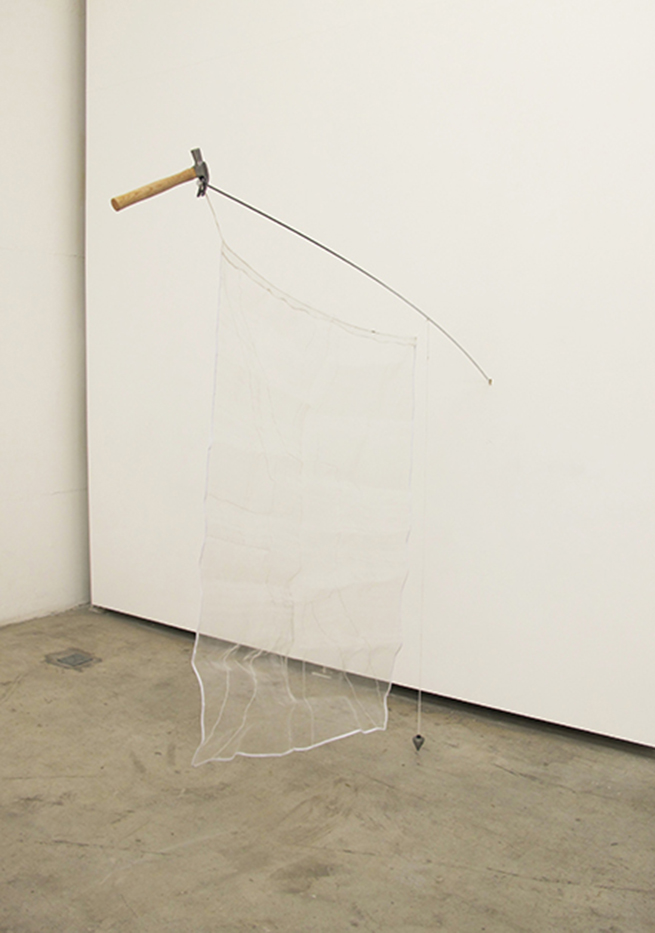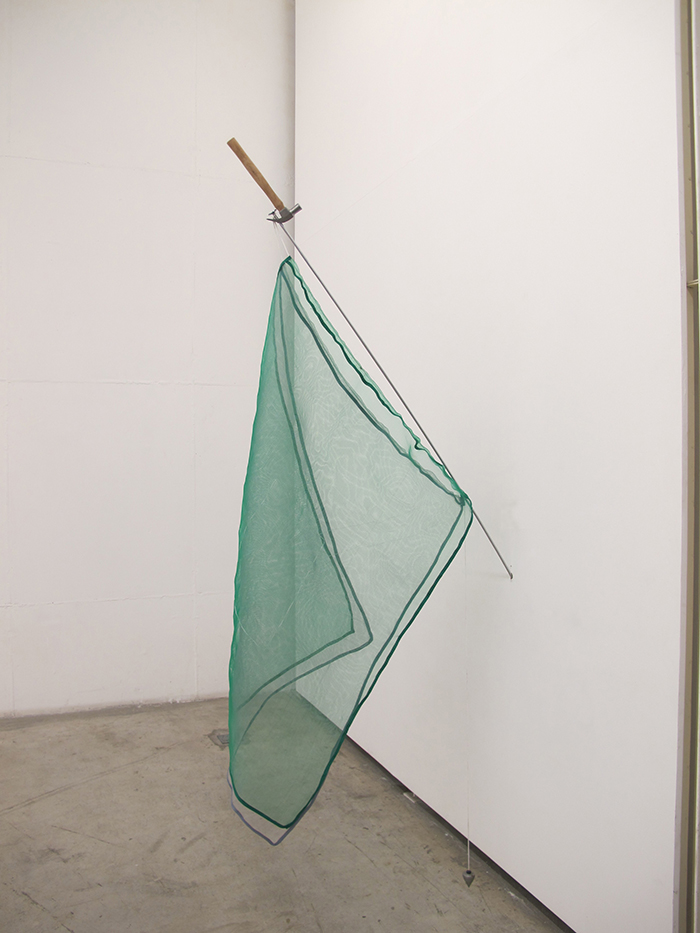
pavilhão #1 (pavilion #1), 2012
hammer, nail, embroidered fabric, bob and mason line
185 x 100 x 120 cm
photo Galeria Leme
The work operates in the ambiguity of the term “pavilhão” (pavilion, in Portuguese), which gives its name to the standards and flags of Brazilian samba schools, but that also means tent or architectural arrangement. In the first context, it is the ideology and tradition of associations: between the community around it there is a reverent respect, and even a certain mystique, so few are allowed to touch it. When it comes to architecture, the word can refer to temporary camps, or lighter and accessory buildings in their specific purposes. Later, the term was appropriate in the field of art facilities for the large exhibitions and representative institutions and entities, such as national pavilions in art biennials around the world.

pavilhão #2 (tapume) [pavilion #2 (fence)], 2014
nail, construction-screen, plumbs, cable ties and mason Line
220 x 100 x 120 cm
photo Galeria Leme

pavilhão #3 (proteção) [pavilion #3 (protection)], 2014
hammer, nail, protection screen, plumb, cable ties and mason Line
200 x 100 x 120 cm
photo Galeria Leme

pavilhão #4 (tapume) [pavilion #4 (fence)], 2015
nail, construction-screen, plumbs, cable ties and mason Line
200 x 70 x 50 cm
photo Galeria Leme